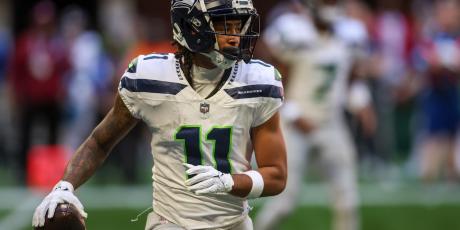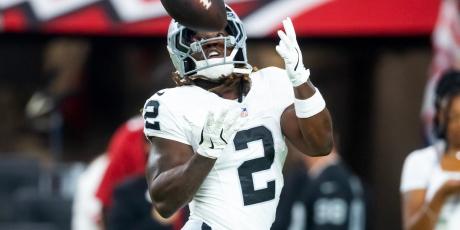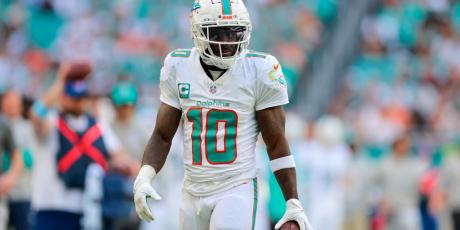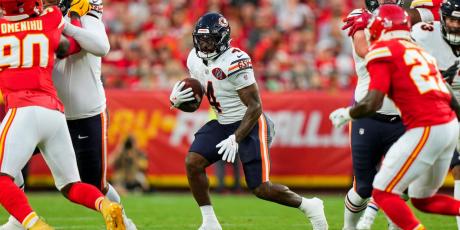Jarvis Landry Has Top-24 Wide Receiver Upside

It's hard to feel confident about Jarvis Landry going into the 2019 season. Landry, who has averaged around 27% of team targets over the last three seasons, will be joined by Odell Beckham, who has averaged nearly 28% of team targets. It seems unlikely that both players will continue such a large fraction of team targets, and Landry is expected to be the one who loses out.
Until we see the two play together, however, this is all guesswork. If only there were data about what might happen when the two are on the field together, we might have some idea, but alas, we're left with only speculation.
LSU 2011–2013
I kid. From 2011–2013, Landry and Beckham were teammates on the LSU Tigers football team. While the run-heavy LSU offense is probably quite different from what we will see in Cleveland next season, there are some lessons that we can learn from their time together at LSU.
Landry saw little action in his freshman season. While he played in 14 games, he caught only four receptions. In contrast, Beckham immediately became the team's WR2 behind Reuben Randle. This is probably not surprising in light of what we have seen from Beckham in the NFL—he is clearly the more talented receiver.
By their sophomore season, Beckham and Landry were the team's clear top two wideouts. In their junior seasons, both put up big numbers, averaging 1172 yards and 9 touchdowns each. Landry surprisingly out-targetted Beckham in both of those seasons, although both saw around 30% of the team targets in their junior year.
The overall production, however, hides a large difference in how the two receivers were used. With a catch rate nearing 80%, Landry was targetted much closer to the line of scrimmage, while Beckham was more of a down-field threat. That is especially interesting as we have seen the same play out in the NFL—Landry succeeded in Miami by catching a large number of short-yardage passes.
Cleveland and Freddie Kitchens
Landry's usage changed significantly in Cleveland. While his average depth of target (aDOT) was a tiny 6.1 in Miami, it surged to 10.0 in his first eight games in Cleveland. The Browns, it appears, wanted to use Landry as more of a traditional WR1.
This trend continued even further when Freddie Kitchens became the playcaller. From Week 9 on, Landry's aDOT increased to 12.8. His catch rate dropped well below 60% and his targets dropped below seven per game. Overall, this experiment with Landry as a deep threat doesn't look to have been particularly successful.
How does Beckham fit into this? In three seasons in New York, Beckham's aDOT was 11.3. Even catching passes from Eli Manning, Beckham had a catch rate above 60%. In other words, Beckham seems well suited for exactly the role where the Browns tested out Landry in 2018.
Projecting 2019 Upside
While Landry currently sits at WR27 in our half-PPR rankings, I can paint a scenario where he ends up a bit higher:
| Scenario | Rec | Yards | TDs | Points | Rank |
|---|---|---|---|---|---|
| Baseline | 71 | 987 | 3.6 | 155.8 | 27 |
| Upside | 93 | 972 | 6.0 | 179.7 | 21 |
How do I get to the "Upside" scenario described here?
First, I imagine the Browns playing at a slightly higher pace, resulting in a 5% increase in plays per game and hence also in passes per game. That would put the Browns up in the top five in the league in plays, next to the more innovative and aggressive offenses. This results in 605 passes rather than the 576 in the current projections.
In these projections, I give Landry a 22% market share, which is not unreasonable for a good WR2 on a team, even though it is well below the 27% I have projected for Beckham.
Next, I imagine that Landry's usage will be as more of possesion receiver, returning him to the role in which he was more successful, both in Miami and at LSU. Using his catch rate of 70% from Miami, he ends up with 93 receptions, even though his total yardage actually decreases slightly.
Finally, I assume that Landry will have a touchdown rate of 4.5%, only slightly above his career average. This projects Landry for 6.0 touchdowns, again, only slightly above his career average of 5.2 per season.
As the table shows, those changes would move Landry up from a position rank of 27 up to 21, making him a low-end WR2.
Dynamic Duos
Would it be crazy for the Browns to have two top-24 WRs in the seam season? Not at all. In each of the last three NFL seasons, at least five teams have had two top-24 WRs. We currently have four pairs of teammates (from the Falcons, Buccaneers, Vikings, and Rams) projected in this range. It should not shock anyone if the Browns ended up as the fifth.
Where to Draft Him
We currently have Landry ranked as WR27 in half-PPR scoring. That places him three spots above consensus, making him a value in the mid-6th round of drafts. Given the upside potential we discussed above, I would feel good about drafting him toward the end of the 6th round.






















